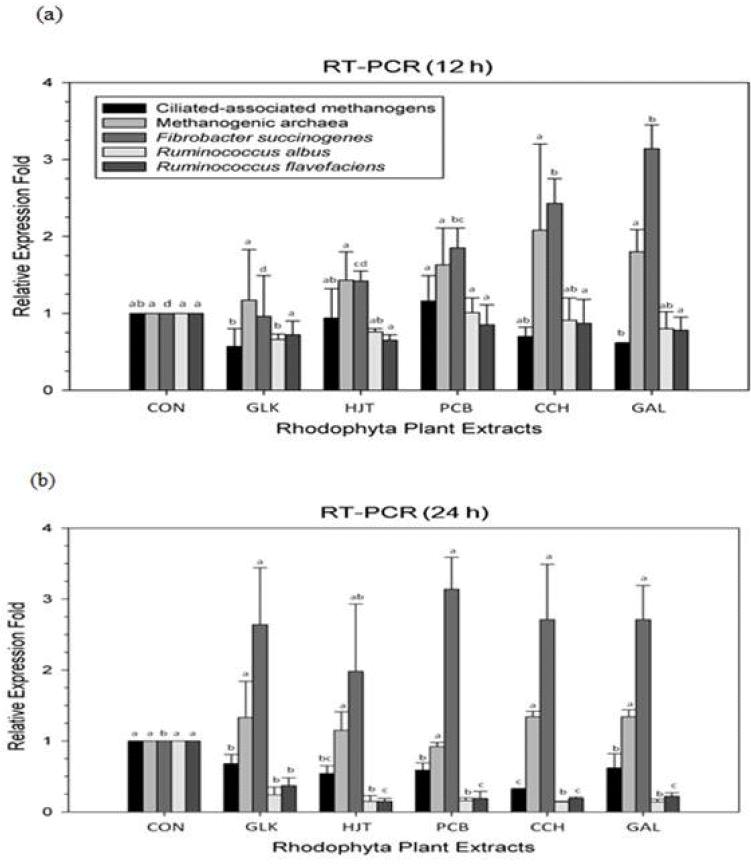1. Denman K, Brasseur G, Chidthaisong A, et al. Couplings between changes in the climate system and biogeochemistry. Solomon S, Qin D, Manning M, editorsClimate change 2007: the physical science basis, contribution of working group I to the fourth assessment report of the intergovernmental panel on climate change. Cambridge, UK: Cambridge University Press; 2007. p. 499ŌĆō587.
2. Wuebbles DJ, Hayhoe K. Atmospheric methane and global change. Earth Sci Rev 2002; 57:177ŌĆō210.

3. Patra AK. Enteric methane mitigation technologies for ruminant livestock: a synthesis of current research and future directions. Environ Monit Assess 2012; 184:1929ŌĆō52.


4. Grainger C, Beauchemin KA. Can enteric methane emissions from ruminants be lowered without lowering their production. Anim Feed Sci Technol 2011; 166ŌĆō67:308ŌĆō20.

5. Kamra DN, Agarwal N, Chaudhary LC. Inhibition of ruminal methanogenesis by tropical plants containing secondary compounds. Int Congr Ser 2006; 1293:156ŌĆō63.

7. Chopin T, Sawhney M. Seaweeds and their mariculture. Steele JH, Thorpe SA, Turekian KK, editorsThe encyclopedia of ocean sciences. Oxford, UK: Elsevier; 2009. p. 4477ŌĆō87.

8. Paul N, Tseng CK. Seaweed. Lucas JS, Southgate PC, editorsAquaculture: farming aquatic animals and plants. 2nd editionOxford, UK: Blackwell publishing Ltd; 2012. p. 268ŌĆō84.
9. Chowdhury S, Huque K, Khatun M. Algae in animal production. In : Agracultural Science of Biodiversity and Sustainability Workshop; Tune Landboskole, Denmark. 1995. p. 3ŌĆō7.
10. Bozic A, Anderson R, Carstens G, et al. Effects of the methane-inhibitors nitrate, nitroethane, lauric acid, Lauricidin
® and the Hawaiian marine algae Chaetoceros on ruminal fermentation
in vitro
. Biore Technol 2009; 100:4017ŌĆō25.

11. Plaza M, Cifuentes A, Ibanez E. In the search of new functional food ingredients from algae. Trends Food Sci Technol 2008; 19:31ŌĆō9.

12. Holdt SL, Kraan S. Bioactive compounds in seaweed: functional food applications and legislation. J Appl Phycol 2011; 23:543ŌĆō97.

16. Koike S, Kobayashi Y. Development and use of competitive PCR assays for the rumen cellulolytic bacteria:
Fibrobacter succinogenes,
Ruminococcus albus and
Ruminococcus flavefaciens
. FEMS Microbiol Ecol 2001; 204:361ŌĆō6.


17. SAS Institute Inc. SAS/STAT userŌĆÖs guide: version 9.2 edn. Cary, NC, USA: SAS Institute Inc.; 2002.
18. Ha JK, Lee SS, Moon YS, et al. Ruminant nutrition and physiology. Seoul, Korea: Seoul National University Press; 2005.
19. Denis C, Moran├¦ais M, Li M, et al. Study of the chemical composition of edible red macroalgae
Grateloupia turuturu from Brittany (France). J Food Chem 2010; 119:913ŌĆō7.

20. Dubois B, Tomkins NW, Kinley RD, et al. Effect of tropical algae as additives on rumen
in vitro gas production and fermentation characteristics. Am J Plant Sci 2013; 4:34ŌĆō43.

22. Ntaikou I, Gavala HN, Kornaros M, et al. Hydrogen production from sugars and sweet sorghum biomass using
Ruminococcus albus
. Int J Hydrogen Energy 2008; 33:1153ŌĆō63.

23. Latham MJ, Wolin MJ. Fermentation of cellulose by
Ruminococcus flavefaciens in the presence and absence of Methanobacterium ruminantium. Appl Environ Microbiol 1977; 34:297ŌĆō301.



25. Mitsumori M, Sun W. Control of rumen microbial fermentation for mitigating methane emissions from the rumen. Asian-Australas J Anim Sci 2008; 21:144ŌĆō54.


27. Davyt D, Fernandez R, Suescun L, et al. New sesquiterpene derivatives from the red alga Laurencia scoparia. Isolation, structure determination, and anthelmintic activity. J Nat Prod 2001; 64:1552ŌĆō5.


29. Mehrez AZ, ├śrskov ER, Mcdonald I. Rates of rumen fermentation in relation to ammonia concentration. Br J Nutr 1977; 38:437ŌĆō43.


30. Larsen M, Kristensen NB. Effect of abomasal glucose infusion on splanchnic amino acid metabolism in periparturient dairy cows. J Dairy Sci 2009; 92:3306ŌĆō18.











 PDF Links
PDF Links PubReader
PubReader ePub Link
ePub Link Full text via DOI
Full text via DOI Download Citation
Download Citation Print
Print





